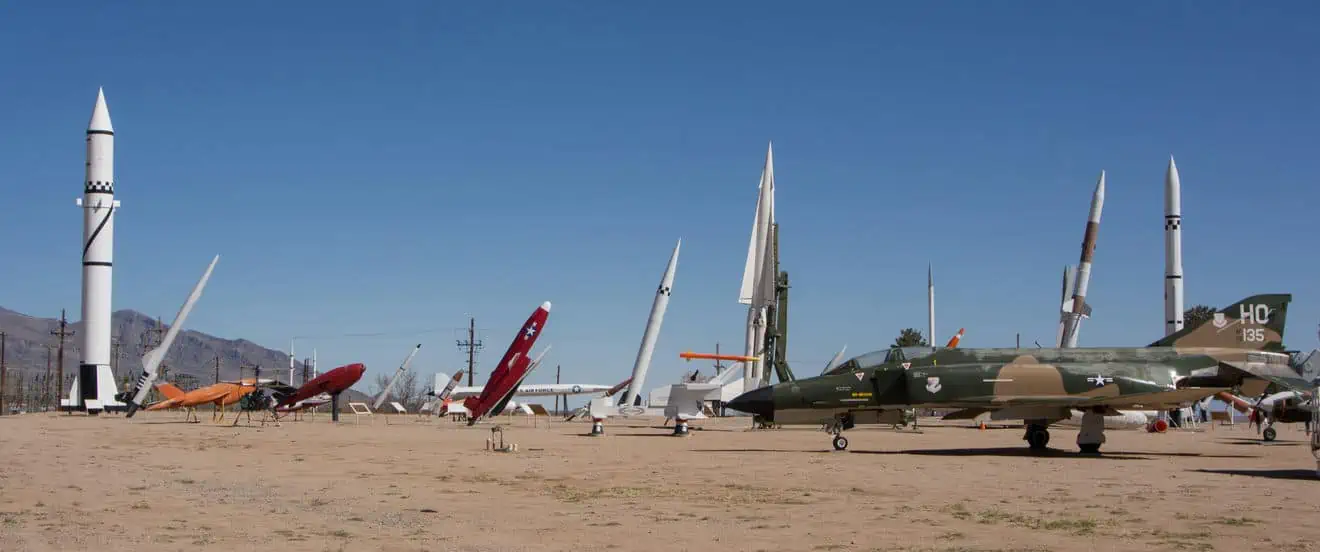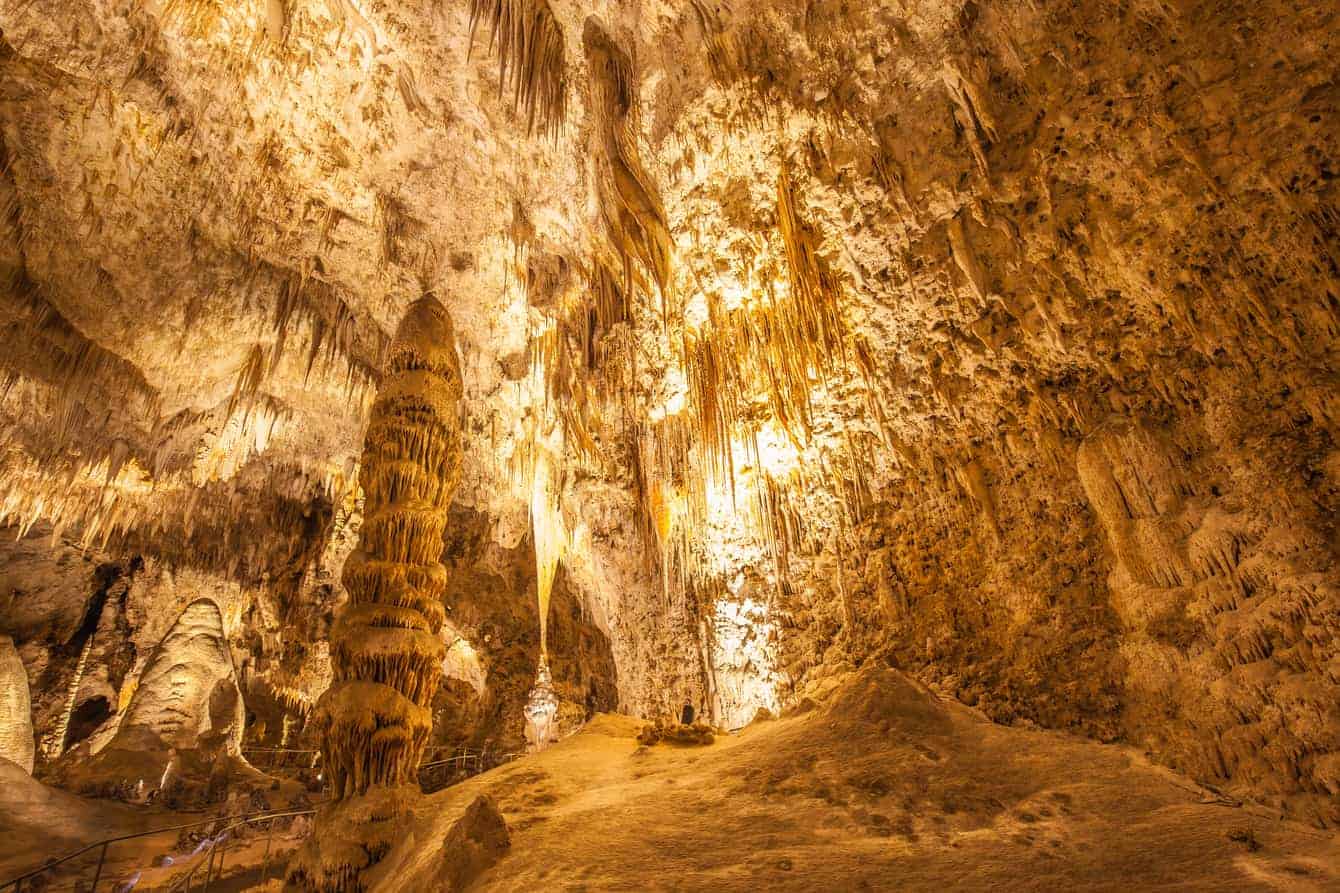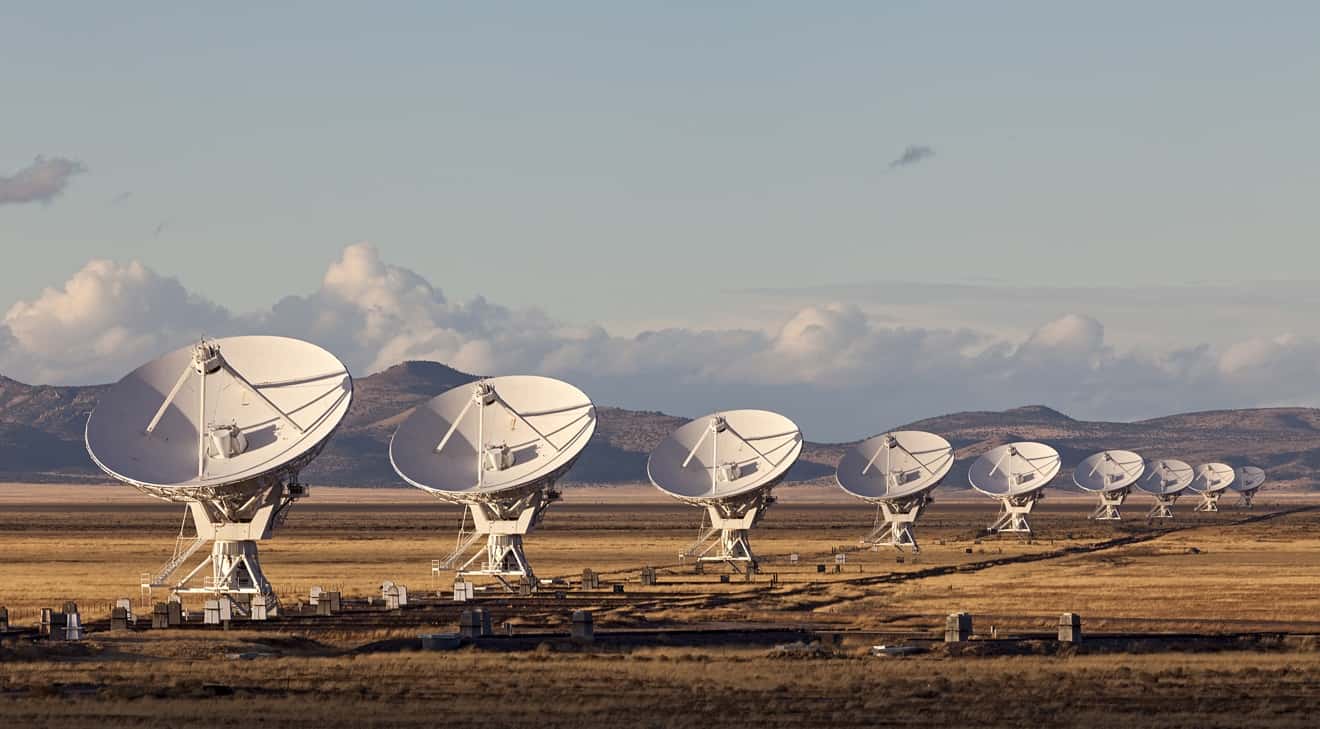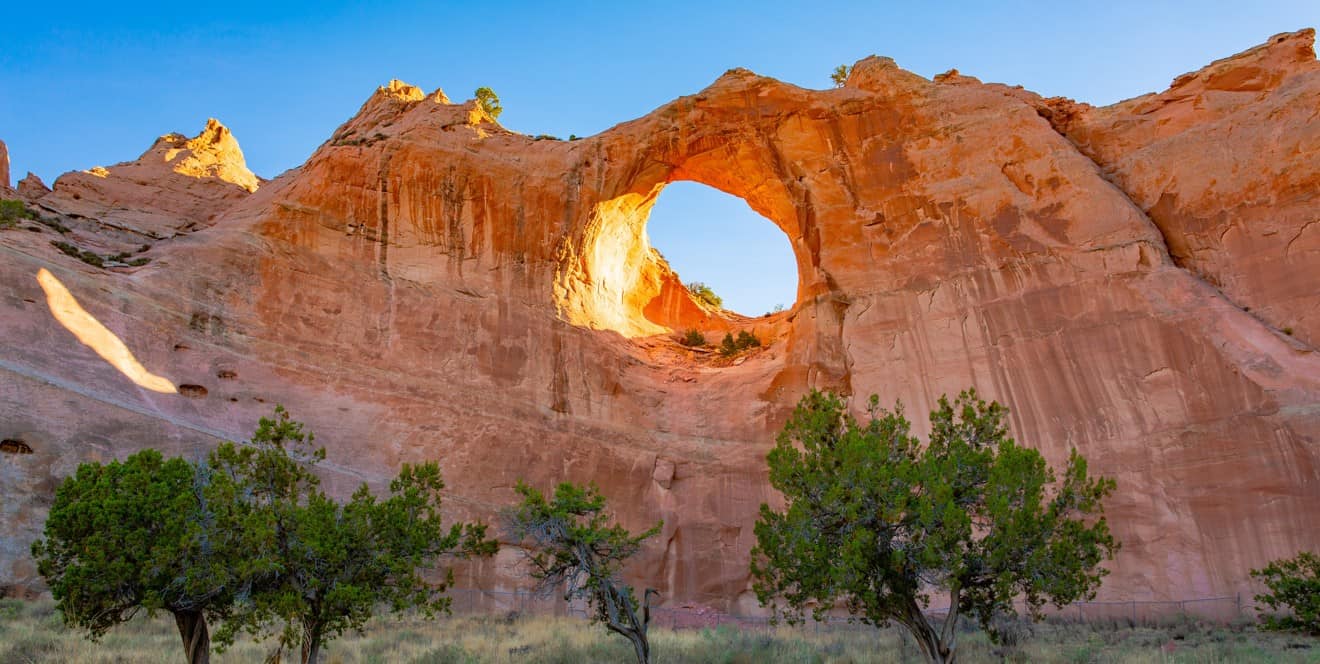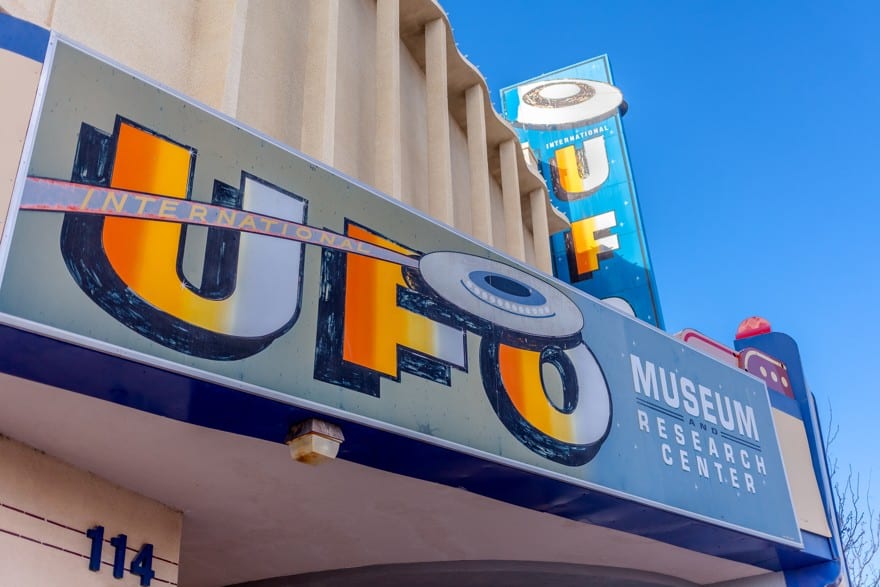The White Sands Missile Range in New Mexico is the largest outdoor area dedicated to military testing under the management of the U.S. Army. It was established during the years of World War II as a facility for conducting exercises and testing the latest military innovations.
Although it may not seem like an ideal place to visit during a West Coast itinerary, within its grounds, there are two destinations that can capture the interest of history enthusiasts and the curious alike. We are referring to the White Sands Missile Range Museum and the renowned Trinity Site. Let’s now explore how to organize a visit.
Contents
About the White Sands Missile Range Museum
It is a museum that houses an extensive collection of rockets and military vehicles, providing a wealth of information about the history of the area and the experiments conducted within the White Sands Missile Range.
Why Visit the White Sands Missile Range Museum
Nestled in the heart of the Tularosa Basin, the White Sands Missile Range Museum is not just a testament to the evolution of missile technology; it’s a gateway to understanding the pivotal moments that have shaped modern warfare and defense strategies. Visitors to the museum are offered a unique glimpse into the world of military research and development, featuring an impressive array of missiles and rockets that have been tested on the range.
Beyond the hardware, the museum tells the story of the people and events that have marked the range’s history. Exhibits detail the lives of early explorers and settlers in the region, the rigorous tests of the Cold War era, and the ongoing quest for technological advancement.
White Sand Missile Range: the military installation that witnessed history
The White Sands Missile Range, sprawling across the southern New Mexico desert, is more than a military installation; it’s a historic landmark where the course of human history was irrevocably altered. Established in 1945, the range has been the site of numerous missile and rocket tests, playing a critical role in the development of the United States’ defense capabilities.
However, its significance is most notably marked by the Trinity Site, where the first atomic bomb was detonated on July 16, 1945. This event not only showcased the terrifying power of nuclear weapons but also set the stage for the end of World War II and the beginning of the nuclear age. It’s a place where science, technology, and ethical considerations collided with profound global implications.
Today, the White Sands Missile Range stands as a symbol of innovation and exploration, as well as a reminder of the responsibilities that come with such power. Its history is a testament to human ingenuity and the complex relationship between technological advancement and its impact on society.
Visiting the Museum: What you Should Know
Here are the key details needed to plan a visit to the White Sands Missile Range Museum.
Hours, prices, and all the necessary information to plan a visit
Admission to the museum is completely free. The opening hours are from Monday to Saturday, from 9:00 AM to 4:00 PM, and the museum is closed on Sundays and during all major holidays.
I invite you to check the official website in case there are any changes to the access procedures and hours.
Things to see at the White Sands Missile Range Museum
In the indoor exhibition space, there are various exhibits and informational panels that trace the history of the area where the White Sands Missile Range is located, from prehistoric times to the present day, with a significant focus on its role for the U.S. Army.
A section covers the battles with the Apache Indians in the Hembrillo Basin that played a crucial role in shaping the destiny of this region. Among these, the most notable is undoubtedly the Battle of Hembrillo Basin in 1880, reconstructed through a model. During this engagement, U.S. forces led by Henry Carroll clashed with Chiricahua and Mescalero Apache warriors under the leadership of Victorio. Despite being outnumbered, Victorio’s forces managed to resist and escape capture.
In addition to this, many other important historical periods for this area are highlighted within the museum. In particular, the museum commemorates the pivotal role played by the White Sands Missile Range during the development years of the Manhattan Project and all military tests conducted in this location during the Cold War.
An entire section of the museum is also dedicated to one of the most technologically advanced missiles from the time of World War II, namely the V-2 rocket developed by Nazi Germany and captured by the Americans in the final stages of the conflict. In this area, in addition to various informational panels, visitors can also get a close-up view of the imposing V-2 rocket.
As you wander through the museum’s sections, you can’t help but notice a rather unusual object placed in this context. Enclosed in a display case, you’ll find Darth Vader’s helmet. If you’re wondering about the reason for this presence, it’s quite straightforward. During the development of the first Star Wars film, Lucasfilm’s sound designer, Ben Burtt, visited the museum’s sound archive twice to study the noise produced by the missiles used in various tests. Some of these effects were then incorporated into the film. The prop was subsequently donated as a token of gratitude for the assistance in developing and realizing the sound effects.
In the outdoor exhibition space, you’ll find what can be described as the true highlight of the museum. Here, you can photograph and get hands-on experience with over 50 types of missiles designed by the U.S. military, along with helicopters, planes, and other military vehicles. The sight, even from a distance, is impressive, as all these historical armaments point towards the sky, creating a spectacle that leaves a lasting impression.
Here is a list of some of the most significant exhibits you’ll find in this area:
- Mobile Launcher MIM-104 Patriot: A surface-to-air missile used since the first Gulf War in 1991. The acronym PATRIOT stands for Phased Array Tracking Radar to Intercept on Target.
- Honest John: The first nuclear ground-to-ground missile produced by the United States.
- Pershing Missile 1 and 2: The second version is considered to have ended the Cold War due to its precision and accuracy. During testing, one of these missiles was fired from a military base in Idaho and successfully hit a target of 150 square feet in the White Sands Missile Range area. The INF Treaty on December 8, 1987, halted the proliferation of this weapon.
- Nike Hercules: The predecessor of the Patriot, in use by NATO forces since the late 1950s.
- Lark Missile: A naval missile developed during World War II to protect U.S. ships from Japanese kamikaze attacks.
- Genie: An air-to-air rocket used by the U.S. and Canadian air forces from 1958 to 1985.
- Redstone: The first medium-range missile that the United States was able to build, thanks to the study and implementation of technology derived from the German V-2 rocket.
How to get to the White Sands Missile Range Museum
The White Sands Missile Range Museum can be reached by taking a short detour along US 70. The exact address is: White Sands Missile Range, Building 200, WSMR P Rt 1, New Mexico 88002.
From Las Cruces / El Paso: Detailed directions for travelers from these regions by car
Here are the travel times from the main towns in the area:
- Las Cruces: approximately 30 minutes
- Alamogordo: approximately 50 minutes
- White Sands National Park: 30 minutes from the park’s visitor center
As it is located within a military area, visiting the White Sands Missile Range Museum requires completing certain bureaucratic steps. Visitors must request a special permit by going to the Las Cruces Gate Visitor Control Center located along Route 213 (the road accessed from US 70). This is also the only entrance that visitors can use.
Upon arrival, it is necessary to present a valid identification document (for tourists, a passport is required, so ensure that everyone intending to visit has one) and undergo a background check. Once this process is cleared, you will need to leave your car and walk to the museum, which is approximately a 5-minute walk.
Unfortunately, it is not possible to complete this bureaucratic process in advance; it must be done on the spot. However, don’t be overly concerned because, despite the initial appearance of a somewhat cumbersome operation, it ultimately won’t require a significant amount of time. It is rare to take more than 10 minutes to complete the checks (though the time may vary depending on the number of tourists present).
Similar to the White Sands National Park, in the event of military exercises, access roads may be closed. Therefore, check the official website to find out if any exercises are scheduled during your visit.
By Air
To reach the White Sands Missile Range by air, the closest major airport is the El Paso International Airport (ELP) in El Paso, Texas. From the airport, visitors can rent a car or use other forms of ground transportation to make the approximately 1.5-hour drive to the White Sands Missile Range.
The journey involves taking I-10 West from El Paso towards Las Cruces, New Mexico, and then following US-70 East directly to the entrance of the White Sands Missile Range.
